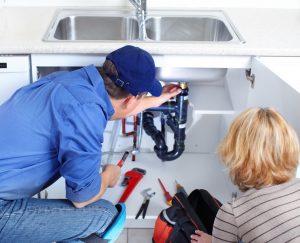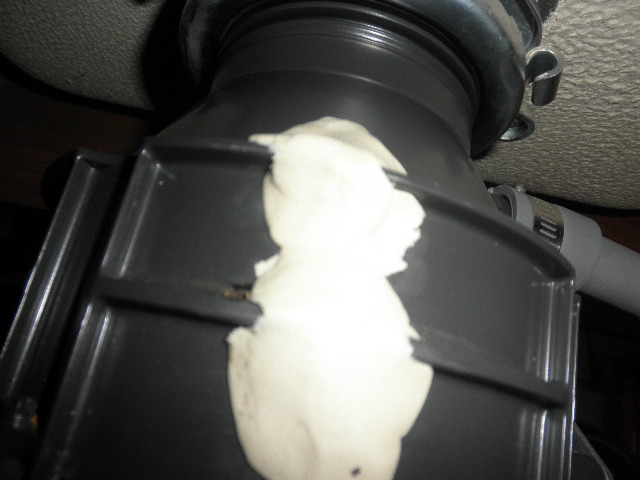Straightforward Techniques for Repairing a Leaky Garbage Disposal
Straightforward Techniques for Repairing a Leaky Garbage Disposal
Blog Article
This great article following next relating to Garbage Disposal Leaking From Bottom is extremely informative. Read on and draw your own personal results.

Waste disposal unit are necessary kitchen home appliances that assist in disposing of food waste successfully. Nevertheless, a leaking garbage disposal can be a frustrating and untidy issue to manage. Luckily, many leakages can be taken care of conveniently with a couple of simple steps. In this short article, we will talk about just how to fix a dripping waste disposal unit properly.
Introduction
Garbage disposals are installed under kitchen area sinks and are made to shred food waste right into smaller pieces, permitting it to go through the plumbing system easily. While these devices are generally reliable, leakages can occur in time due to wear and tear, loosened links, or damage to the unit.
Typical Root Causes Of Leakages in Waste Disposals
Worn Seals and Gaskets
Seals and gaskets play a vital function in avoiding water from dripping out of the waste disposal unit. In time, these components can degrade, leading to leakages around the disposal device.
Loose Links
The links in between the garbage disposal and the pipes system can become loose in time, causing water to leakage out throughout operation.
Fractures or Holes in the Disposal System
Physical damage to the waste disposal unit, such as splits or openings in the real estate, can additionally lead to leaks.
Identifying the Source of the Leak
Prior to attempting to take care of a leaking garbage disposal, it is vital to identify the resource of the leak. This can normally be done with visual evaluation or by conducting basic tests.
Visual Evaluation
Evaluate the garbage disposal unit thoroughly for any type of indications of water leakage. Pay very close attention to areas around seals, gaskets, and connection points.
Checking for Leakages
One method to evaluate for leaks is by running water with the disposal unit and checking for any visible indicators of leakage.
Devices and Products Needed for Taking Care Of a Dripping Garbage Disposal
Before starting the repair work process, collect the needed tools and products, including a screwdriver, flexible wrench, plumbing's putty, substitute seals or gaskets, and epoxy or patching material for fixing cracks or holes.
Step-by-Step Overview to Taking Care Of a Leaking Garbage Disposal
Turn Off the Power
Before attempting any repair work, make sure that the power to the waste disposal unit device is switched off to stop the threat of electrical shock.
Locate the Leakage
Identify the precise location of the leak and determine the reason.
Tighten up Links
Use a wrench to tighten up any kind of loose links between the disposal device and the plumbing system.
Change Seals or Gaskets
If the leakage is because of worn seals or gaskets, eliminate the old components and change them with brand-new ones.
Patching Splits or Holes
For fractures or openings in the disposal system, use epoxy or a suitable patching product to seal the damaged location.
Checking the Garbage Disposal After Repair Service
Once the fixing is total, check the waste disposal unit by running water via it to make certain that the leak has been solved.
Preventive Upkeep Tips to Prevent Future Leakages
To avoid future leaks, it is vital to do routine maintenance on your waste disposal unit. This consists of maintaining it clean, staying clear of placing non-food things or tough objects down the disposal, and periodically looking for leakages or various other issues.
Conclusion
To conclude, fixing a dripping waste disposal unit is a relatively uncomplicated process that can be finished with fundamental devices and materials. By complying with the actions described in this article and exercising precautionary upkeep, you can keep your garbage disposal in good working condition and stay clear of costly repair work in the future.
What to Do About a Leaking Garbage Disposal
A leaking garbage disposal often goes unnoticed until you confront a sopping cabinet, a foul-smelling puddle, or an audible drip-drip-drip from the unit. The fix can be frustrating, too, because the leak can stem from a number of components in the system. Fortunately, with a little sleuthing, you can zero in on the leak and—depending on the exact location—stop the icky oozing and repair the component that caused it. Worst case scenario, if it turns out that the garbage disposal must be replaced, installing a new one is a reasonable do-it-yourself task for those with basic plumbing skills. Read on to keep the cash you’d otherwise hand over to a pro.
Prepare to find the leak
Prior to testing the garbage disposal for leaks, unplug it at the wall outlet and turn off the power from the breaker box to prevent electrical shock. Then insert a watertight sink stopper into your sink drain and wipe the unit dry with a clean cloth. In any handy container, mix a few drops of food coloring into a few cups of water, and pour the dyed water onto the sink stopper to help you locate the leak.
Investigate the source
the top, where the disposal meets the sink drain the side, where the dishwasher hose or main drain pipe connects to the disposal or the bottom of the unit Inspect each of these locations while gliding a light-colored rag over the unit; the dyed water will readily show on the rag and reveal the location of the leak. If a leak isn’t immediately apparent, remove the sink stopper and pour a few more cups of dyed water down the sink drain, then check for leaks again. Leaks near the top of the unit are more likely to show themselves while the sink is plugged, while side and bottom leaks are more noticeable while the sink is unplugged.
The metal sink flange that sits directly inside the sink drain is typically sealed around the top with plumber’s putty (a clay-like sealant) and then secured from under the sink with bolts. If the plumber’s putty deteriorates, or the bolts loosen, the flange can no longer form a watertight seal between the sink drain and the disposal—which could cause a leak at the top of the unit.
To reseal the leaky flange, you must first detach the garbage disposal. Start by loosening the screws securing the main drain pipe to the disposal, then loosen the screws in the metal clamp securing the dishwasher hose to the disposal and detach the drain pipe and dishwasher hose from the disposal. Loosen the screws in the mounting ring that connects the disposal to the metal mounting assembly beneath the sink, then pull down the disposal and carefully set it on a clean, dry surface. Loosen the bolts in the mounting assembly with a wrench, then pull down the mounting assembly and set it near the disposal.

Hopefully you enjoyed reading our article on The Handy Guide To Fixing Your Garbage Disposal Leaking. Thanks for taking the time to read our article post. Sharing is nice. Helping people is fun. We treasure reading our article about Tips on Fixing a Leaking Garbage Disposal.
Click Here Report this page